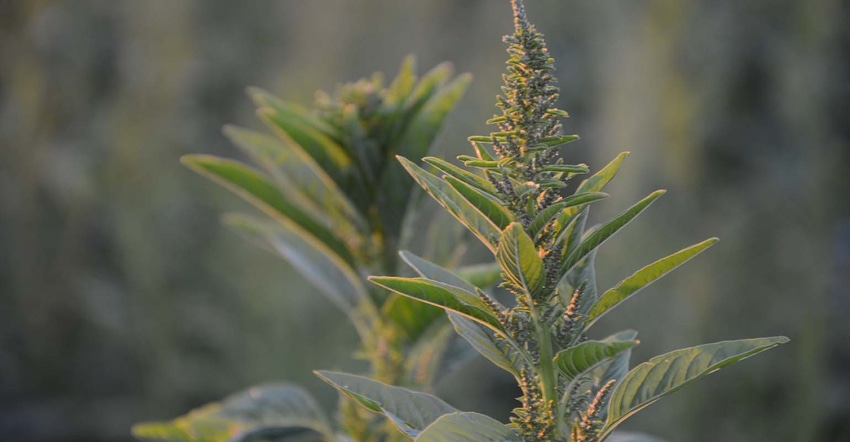
It’s been a staple recommendation for years – rotate herbicides to effectively manage weed resistance. But troubling new research from the University of Illinois suggests that practice doesn’t really work.
“If you were to ask farmers what is the one thing you can do to delay resistance evolution, they’ll say rotate herbicides,” according to Pat Tranel, Ainsworth Professor in the University of Illinois Department of Crop Sciences. “This study shows that’s not true.”
The study investigated the so-called ‘fitness cost’ of killing plants with herbicides. The assumption is no herbicide application will kill 100% of the weeds sprayed, so researchers focused on the surviving plants. Tranel further explains how fitness cost works against weeds that contain a resistance allele – the mutation that allows them to survive a herbicide application and reproduce.
“If there’s a high fitness cost to the glyphosate resistance allele [for example], most of the surviving plants will be small or will flower late, and they won’t produce any seeds,” he says. “But if the fitness cost is low, those plants will produce just as many seeds as plants that don’t’ have the allele.”
For herbicide rotation to work, fitness cost must be high, Tranel concludes.
For the experiment, researchers bred nonresistant female waterhemp plants with male waterhemps that were resistant to five different herbicides. The researchers took 45,000 of the subsequent seeds and proceeded to grow six generations of plants over three years in a greenhouse setting.
The goal was to measure fitness cost over those six generations, Tranel says.
“If the resistance alleles had a high fitness cost, we should have seen them decrease in frequency or disappear over the six generations,” he says.
But that didn’t happen. Instead, no dramatic changes occurred. For example, the allele for ALS-inhibiting herbicides was statistically lower – but it still only decreased by about 10% per year, Tranel says.
“At the rate it was decreasing, even if a farmer used an alternative herbicide for nine years, the frequency of resistance to ALS inhibitors would only be cut in half,” he says.
Tranel says the bottom line is that once resistance occurs, even long rotations won’t work. He has been telling farmers that once they have resistance, “you’re stuck with it.”
“It gives us that much more incentive to do the right things to avoid resistance in the first place,” he says. “That means using multiple herbicides, using a PRE and coming back with a post. If you have escapes, get out of your tractor and get rid of them before they set seed. If they set resistant seed, this study tells you that you will have that resistance trait for life.”
The study’s findings were published in the journal Pest Management Science.
About the Author(s)
You May Also Like






